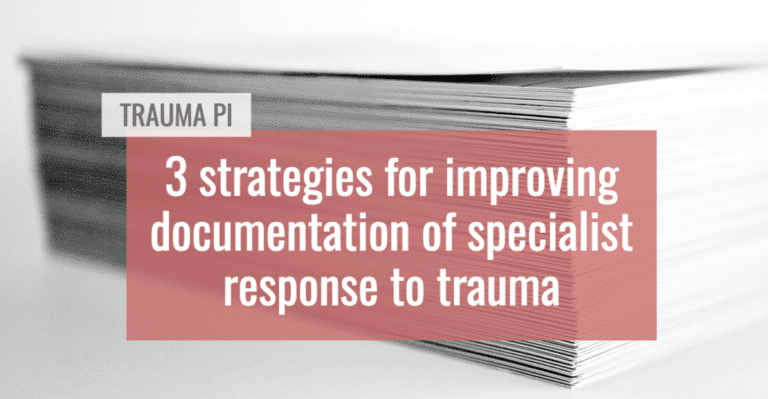In the 2022 revision of Resources for Optimal Care of the Injured Patient, the American College of Surgeons (ACS) made several key changes to response requirements for neurosurgery, orthopedic surgery and interventional radiology. The biggest compliance challenge in most trauma centers is documenting specialist response times.
At Dell Seton Medical Center at the University of Texas, a Level I trauma center in Austin, the overall compliance rate for specialty response documentation was 23%. After a series of interventions led by the performance improvement (PI) team, documentation rates rose to 82% for neurosurgery and 93% for orthopedic surgery.
Lauri Russell, BSN, RN, TCRN, trauma nurse process improvement coordinator, shared three strategies that Dell Seton used to dramatically increase specialty response documentation.
1. Use a SMART goal to focus specialist partners
Improving specialist response documentation is a challenge because it requires commitment and cooperation from multiple services and departments. Russell recommends developing a SMART goal to achieve clarity and alignment across all stakeholders.
“SMART” is an acronym for Specific, Measurable, Achievable, Relevant and Time-limited. Russell used a version of the basic SMART approach to create a well defined goal for improving specialist documentation.
(To see exactly how Russell structured Dell Seton’s SMART goal, read the new white paper: Streamlining and Documenting the Specialist Response to Trauma.)
“Improving response documentation involves attendings, mid-level providers and residents from multiple departments,” Russell said, “so a SMART goal is critical to making sure everyone is marching in the same direction.”
2. Identify the underlying issues that are driving noncompliance
In general, specialists fail to document their response to trauma either because they are unaware of the requirement or they simply forget to do so. However, there may be other reasons for documentation lapses.
At Dell Seton, Russell found that many specialists misunderstood the definition of “trauma patient.”
“When we asked why a specialist did not document their response time, we heard, ‘Well, the ED requested the consult, not the trauma attending.’ Others said, ‘That was a fall, not a trauma.’ Still others thought that patients who were transferred in from another facility were not included under the trauma documentation requirement.”
In these situations, Russell said, the corrective action is education. “A great deal of our efforts went into reinforcing the idea that any patient with an injury is a trauma patient, regardless of who asked for the consult, the mechanism of injury or how the patient arrived to us.”
3. Gain the support of hospital physician leadership
According to Russell, gaining the support of physician leaders is critical to the success of any documentation compliance initiative.
“Senior leadership attends our monthly trauma services admin meetings, and we share our specialist response data at every meeting,” Russell explained. “That gave importance to our response compliance effort and helped create accountability.”
“We also asked the chief medical officer for her support, and she sent out regular emails recognizing the specialty departments for their progress on this initiative,” she said. “This was important because sustaining a change is difficult, and senior praise matters.”
The hospital’s resident coordinator also provided key support. “You have to have whoever manages the mid-levels working with you,” Russell said. “For us, mid-levels are our frontline providers 90% of the time.”
To learn more practical strategies for complying with ACS standards covering neurosurgery, orthopedic surgery and IR, read Streamling and Documenting the Specialist Response to Trauma.

